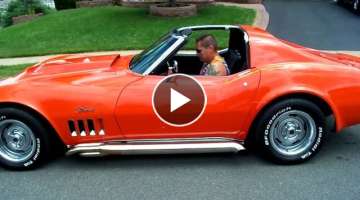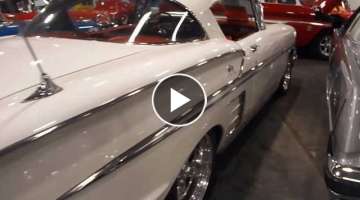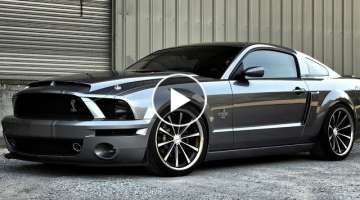Fabulous Cars of the 1950s: The 1958 Chevrolet Impala - A Legend is Born
The full-size 1955 through 1957 Chevrolet passenger-car line had been immensely successful, yet Chevrolet styling took a new direction in 1958. The 1958 Chevrolet Bel Air looked nothing like its 1957 predecessor, as all full-size 1958 Chevrolets received fresh and new bodyshell designs, which they shared with Pontiac. With the all-new X-member 'Safety Girder' frame design and four-wheel coil suspension (replacing the old leaf springs), the 1958 Chevys were lower, wider, longer, and more luxurious, with the 283 CID V8 remaining as the mainstay powerplant. New for 1958 was the first of the company's big-block powerplants, with the 348 available in four different states of tune. The 348 CID 'Turbo thrust' was essentially the company's truck motor and Chevy's second-generation V-8. It was called the 'W' engine, referring to the shape of its valve covers, and would eventually evolve into the legendary '409.' With tri-power (meaning three two-barrel carburetors), the engine developed an impressive 280 horsepower.
Chevrolet sales remained strong, despite a weak American economy, and the new top-of-the-line Impala series accounted for over 15 percent of Chevrolet's 1.1 million cars sold. They reclaimed the top spot in sales from Ford and captured 29.5 percent of the market that year. Period advertisements touted the 'low, thrusting silhouette' and 'Sculpturamic Styling' of the full-size models - up to nine inches longer and five inches lower, on a 2.5-inch longer wheelbase than before. Even with its sales success, the 1959 model was all-new yet again.
Dramatic dream car-inspired stylistic cues included neatly coved gullwing-style rear fenders, rear-deck sculpting, quad headlamps (making their first appearance), and revised bodyside accent trim. The large grille, courtesy of GM stylist Harley Earl, was similar to those of Buick and Oldsmobile.
Chevrolet carefully segmented its model lines, with each higher level outfitted with increasing levels of trim, comfort, convenience items, and standard powertrains. Chevy buyers had the option of the basic Del Ray and Biscayne to the top Bel Air series, which was joined for 1958 by the high-style Impala. The American public was first exposed to the Impala name in 1956 on a concept car that was part of the GM Motorama.
The Impala was a trim line of the Bel Air series for 1958 and was offered only in sport coupe and convertible body styles. Distinguishable features included the Impala script, insignia, and crossed-flag emblems at the front of the cove. They had large imitation chrome-plated scoops ahead of the rear wheel wells, broad ribbed body sill panels, and two-spoke deep hub steering wheels with Impala medallions. From the A-pillar back, the Impala was markedly different from the regular Chevrolet model lineup.
The 1958 Chevy Bel Airs wore a one-year-only styling and came with a wide variety of small-block and 'W-head' V8 powertrains. When it was new, Chevrolet Chief Engineer Ed Cole described the Impala as a '...prestige car within reach of the average American citizen.'
The Impala became a separate model in 1959 in both two and four-door versions and later became the best-selling car in the Chevrolet product line. In 1960, it became the best-selling automobile in the United States and held that position for the next decade. From 1958 until 1996, Impala sales were in excess of 13 million units, more than any other full-size car in the history of the automobile. In 1965, the Impala set an all-time industry annual sales record of more than one million units, which has never been bettered.
VIDEO
Facebook Comments































